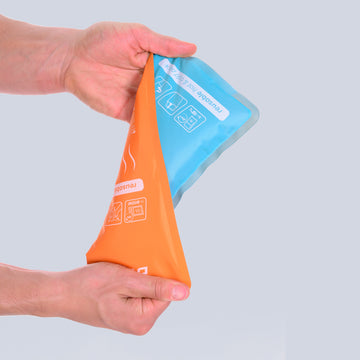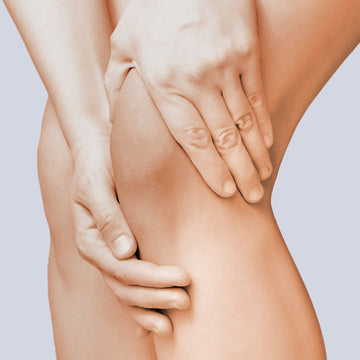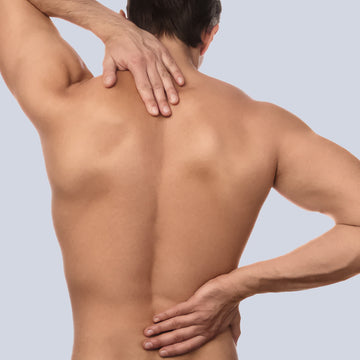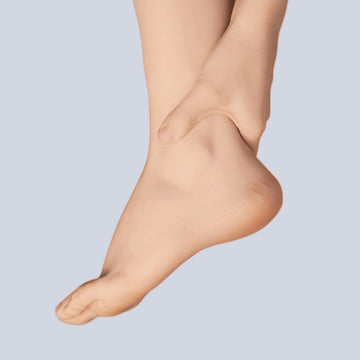Posted by Tia Patel | Mar-04-2020

The role of nutrition in managing pain
Did you know 33% of UK adults struggle with pain daily! (formulate health)
Amongst the Coronavirus pandemic is a silent epidemic of people living in pain! The NHS recommends exercise as key to recovering from persistent pain. However a lack of motivation and movement during the past 12 months may have made pain worse.
With March being National Nutrition Month, find out how nourishing the body with healthy foods can be used alongside your gel pack to reduce pain and help get you back on your feet ready for post lockdown life....
How does nutrition affect pain management
- What you eat can either enhance the function of the nervous, immune and endocrine systems or make it worse - which can directly impact pain experiences.
- Losing or maintaining weight reduces the load on joints, and reduces inflammation.
- Your weight and dietary intake can impact on the risk and/or severity of developing long term chronic diseases (e.g. cardiovascular disease, diabetes and poor mental health)
Tips for nutrition and pain management
1.Reduce inflammation to help protect your body from oxidant damage: Polyphenols are compounds found in fruit and vegetables and have antioxidant and anti-inflammatory properties. For those who struggle to prepare vegetables as a result of being in pain (e.g. not being able to chop as a result of arthritis pain or back pain which prevents you from standing for long periods) incorporating frozen mixed vegetables or frozen fruit into a meal is a healthy nutritional alternative.
2. Good quality fats: Omega-3 fats and olive oil both help to reduce inflammation and enhance the immune system. It's recommended to aim for 2-3 portions of oily fish (salmon and sardines) per week with other high in omega-3 foods including canola oil, flaxseeds and walnuts.
3. Prevent vitamin and mineral deficiencies: Common micronutrient deficiencies in people experiencing pain include Vitamin D, Vitamin B12 and magnesium. Vitamin D, which comes primarily from exposure to sunlight, is an antioxidant and associated with muscle fatigue . Vitamin B12 plays a role in neurological processes related with pain. Magnesium is associated with muscle spasm, inflammation and neuropathic pain. Deficiencies in micronutrients may exacerbate pain so its important to consume a wide range of nutrient-dense foods to ensure you are meeting your vitamin and mineral requirements.
4. Water intake: Dehydration can increase sensitivity to pain. It can also have other effects on health outcomes, especially in older populations, such as poor wound healing and constipation. Water is essential for the circulation of nutrients and the elimination of waste products, both of which can influence healing, and pain management. Try to aim for 2-3 litres/day by either incorporating small frequent drinks between meals and foods with higher water content e.g. soup or fill a large water bottle every day and work through it to ensure fluid goals are met.
5. Increase fibre: Fibre is important for proper digestion and maintenance of a healthy microbiome and weight management. When increasing fibre intake, you should also increase fluid intake. Fibre and fluid work together in promoting bowel health.
6. Reduce and limit ultra-processed foods and sugar intake: These foods and drinks contain high amounts of energy and very little amounts of beneficial nutrients. These foods can increase inflammation and oxidation, the breaking down of cells, this can increase the presence of pain . Higher intakes of sugar and high fat food and drinks can lead to a higher risk of poor health and chronic diseases such as cardiovascular disease and diabetes.
5 ingredients that help manage pain
- Ginger: A staple of traditional medicine, this pungent root is probably best known for its anti-nausea, stomach-soothing properties. But ginger can also fight pain, including aching joints from arthritis as well as menstrual cramps. One study found ginger capsules worked as well as over-the-counter anti-inflammatory drugs like ibuprofen to relieve period pain.
- Pumpkin Seeds: Pepitas are a source of magnesium, a mineral that may cut the number of migraines you get. They may also be eaten to prevent and treat osteoporosis. For more magnesium, add almonds and cashews, dark green leafy vegetables (like spinach and kale), beans, and lentils to your diet.
- Virgin Olive Oil: The peppery tingle in the back of your throat from virgin olive oil, that’s caused by a compound called oleocanthal, and it works like ibuprofen. Extra-virgin olive oil also contains lubricin, which prevents joints from getting stiff and protects cartilage from breaking down. If you choose to use virgin olive oil, stick to cooking at lower temperatures (less than 410 degrees) so you don't lose any of its many benefits.
- Chilli Peppers: Capsaicin, the part of the chili that gives it heat, is well known for its painkilling properties in creams and patches. Eating hot peppers, instead of putting them on your skin, may reduce and prevent inflammation, too. The "burn" tricks your brain into releasing endorphins, which block pain signals.
- Mint : Peppermint oil relieves the painful cramps, gas, and bloating that are associated with irritable bowel syndrome. Peppermint tea is also a good soother for occasional tummy upset with Brazilian mint tea said to be as effective as a prescription painkiller.
Let us know your favourite foods for pain relief below.
#TeamGPD
















